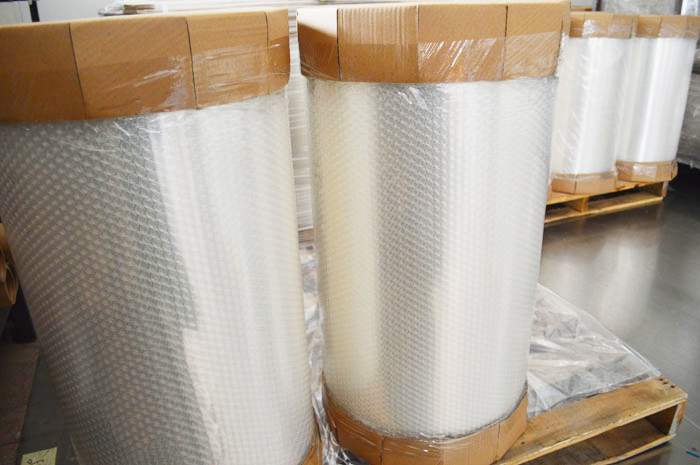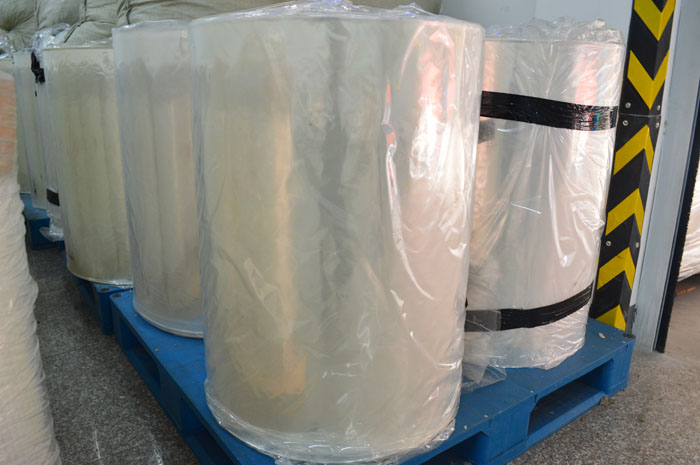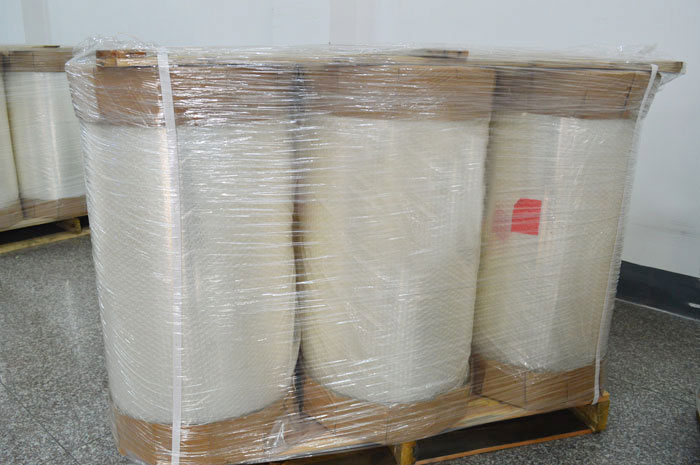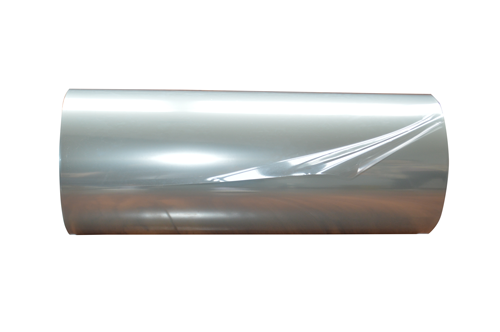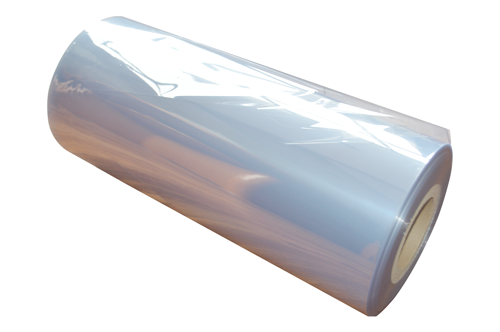Heat shrink film trademark
The shrink film trademark is an emerging trademark. Along with the influence of imported beverages, a shrink film for trademark decoration is booming in China. The advantage of the heat shrinkable film trademark is that it adheres to the bottle body after heating and shrinking, moisture can not enter, the pattern is not damaged, no wrinkles and no convex phenomenon, and can be closely attached according to the shape of the object, making people feel novel and generous, full and elegant.
Formulation design of each layer of multi-layer cooking shrink film
1, the inner layer
The first layer is a heat-sealing layer, that is, the fusion can be achieved by conventional means of heating, and the fusion interface must have sufficient thermal stability to facilitate processing of the food sealed in the bag at or above ambient temperature. To prevent gas or liquid leakage, in order to adapt to the poaching application in the bag, the heat sealing seal should be able to withstand elevated temperatures in a humid air or steam environment or immersed in hot water for a long time (71-72 At a temperature of °C or higher, the fusion interface is able to withstand the tension of the telescopic attraction due to the relative sealing of the food in the bag under the sterilization temperature conditions.
Therefore, the first layer should be a propylene ethylene random copolymer with a propylene content greater than 90% and a melting point between 129 and 136 °C. In addition, the adhesion of the inner layer of the film to the meat can be controlled by surface energy, including whether it is surface treated and the extent of treatment, such as by corona discharge treatment. A film with high meat adhesion can reduce the loss of gravy during boiled cooking. If it does not prevent the loss of meat, it may result in loss of product weight. In addition, for applications that need to retain processing/packaging film for processing or use after processing, Loss of gravy during boiled sterilization may make the appearance of the product unsatisfactory. Films with low meat adhesion can be peeled off from the food immediately after scouring, and the food is further processed or packaged.
2, adhesive layer
The second layer and the fourth layer are respectively disposed on both sides of the center layer to provide good interlayer bonding for the multilayer structure, and also can achieve a low temperature (not higher than 90 ° C) shrinkage rate of more than 30% by directional stretching. At the same time, it has good optical properties. These two layers generally comprise three copolymers.
The first copolymer is a very low density linear polyethylene (VLDPE) having a density generally between 0.900 and 0.915/cm3. This VLDPE has high shrinkage, high tensile strength, and greater puncture resistance. The second copolymer is EVA. The third copolymer is a binder resin of an acid anhydride graft modified copolymer.
3, the central layer
The center has been composed of EVOH, which controls the oxygen permeability of the film. In order to package the perishable food, it is desirable to minimize the oxygen permeability. Under an atmospheric pressure, 23 ° C, and relative humidity of 0%, the film is within 24 hours. Oxygen permeability is usually less than 10 cm3/m2. The EVOH has a vinyl content of 38 mol% and a melting point of about 175 ° C. As the vinyl content increases, the melting point decreases and the oxygen permeability increases. Although the center layer consists essentially of EVOH, it can also contain 0-20% of the tool PA666 in order to change the properties of the center layer, such as gas permeability or moisture resistance.
4, the outer layer
The outer layer should be resistant to friction, mechanical damage, and can withstand the stresses caused by processing. It should also be easy to machine, including suitable for transportation, packaging, printing, bag making, etc., where high shrinkage is required at low temperatures (eg, no higher than 90 ° C). In the occasion, it should also be easy to stretch and have good gloss. The outer layer contains two copolymers. The first copolymer is a very low density ethylene copolymer. VLDPE, with a density between 0.900 and 0.915/cm3 and a melt index of less than 1g/10min, provides a water vapor barrier to prevent moisture infiltration and good moisture barrier. Performance avoids weight loss and prevents the packaged food product from drying out. The second copolymer is EVA.
Formulation design of each layer of multi-layer cooking shrink film
1, the inner layer
The first layer is a heat-sealing layer, that is, the fusion can be achieved by conventional means of heating, and the fusion interface must have sufficient thermal stability to facilitate processing of the food sealed in the bag at or above ambient temperature. To prevent gas or liquid leakage, in order to adapt to the poaching application in the bag, the heat sealing seal should be able to withstand elevated temperatures in a humid air or steam environment or immersed in hot water for a long time (71-72 At a temperature of °C or higher, the fusion interface is able to withstand the tension of the telescopic attraction due to the relative sealing of the food in the bag under the sterilization temperature conditions.
Therefore, the first layer should be a propylene ethylene random copolymer with a propylene content greater than 90% and a melting point between 129 and 136 °C. In addition, the adhesion of the inner layer of the film to the meat can be controlled by surface energy, including whether it is surface treated and the extent of treatment, such as by corona discharge treatment. A film with high meat adhesion can reduce the loss of gravy during boiled cooking. If it does not prevent the loss of meat, it may result in loss of product weight. In addition, for applications that need to retain processing/packaging film for processing or use after processing, Loss of gravy during boiled sterilization may make the appearance of the product unsatisfactory. Films with low meat adhesion can be peeled off from the food immediately after scouring, and the food is further processed or packaged.
2, adhesive layer
The second layer and the fourth layer are respectively disposed on both sides of the center layer to provide good interlayer bonding for the multilayer structure, and also can achieve a low temperature (not higher than 90 ° C) shrinkage rate of more than 30% by directional stretching. At the same time, it has good optical properties. These two layers generally comprise three copolymers.
The first copolymer is a very low density linear polyethylene (VLDPE) having a density generally between 0.900 and 0.915/cm3. This VLDPE has high shrinkage, high tensile strength, and greater puncture resistance. The second copolymer is EVA. The third copolymer is a binder resin of an acid anhydride graft modified copolymer.
3, the central layer
The center has been composed of EVOH, which controls the oxygen permeability of the film. In order to package the perishable food, it is desirable to minimize the oxygen permeability. Under an atmospheric pressure, 23 ° C, and relative humidity of 0%, the film is within 24 hours. Oxygen permeability is usually less than 10 cm3/m2. The EVOH has a vinyl content of 38 mol% and a melting point of about 175 ° C. As the vinyl content increases, the melting point decreases and the oxygen permeability increases. Although the center layer consists essentially of EVOH, it can also contain 0-20% of the tool PA666 in order to change the properties of the center layer, such as gas permeability or moisture resistance.
4, the outer layer
The outer layer should be resistant to friction, mechanical damage, and can withstand the stresses caused by processing. It should also be easy to machine, including suitable for transportation, packaging, printing, bag making, etc., where high shrinkage is required at low temperatures (eg, no higher than 90 ° C). In the occasion, it should also be easy to stretch and have good gloss. The outer layer contains two copolymers. The first copolymer is a very low density ethylene copolymer. VLDPE, with a density between 0.900 and 0.915/cm3 and a melt index of less than 1g/10min, provides a water vapor barrier to prevent moisture infiltration and good moisture barrier. Performance avoids weight loss and prevents the packaged food product from drying out. The second copolymer is EVA.






